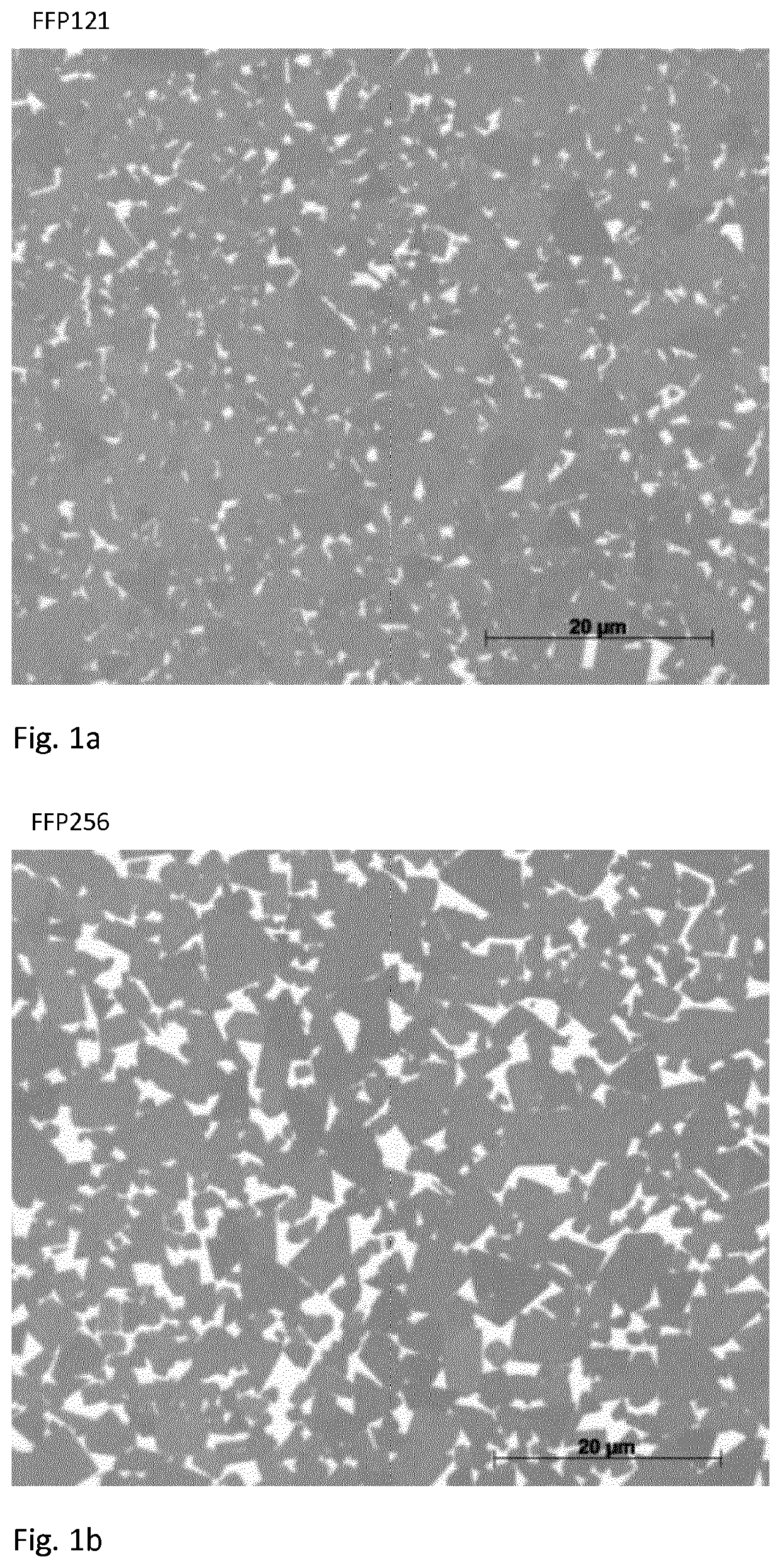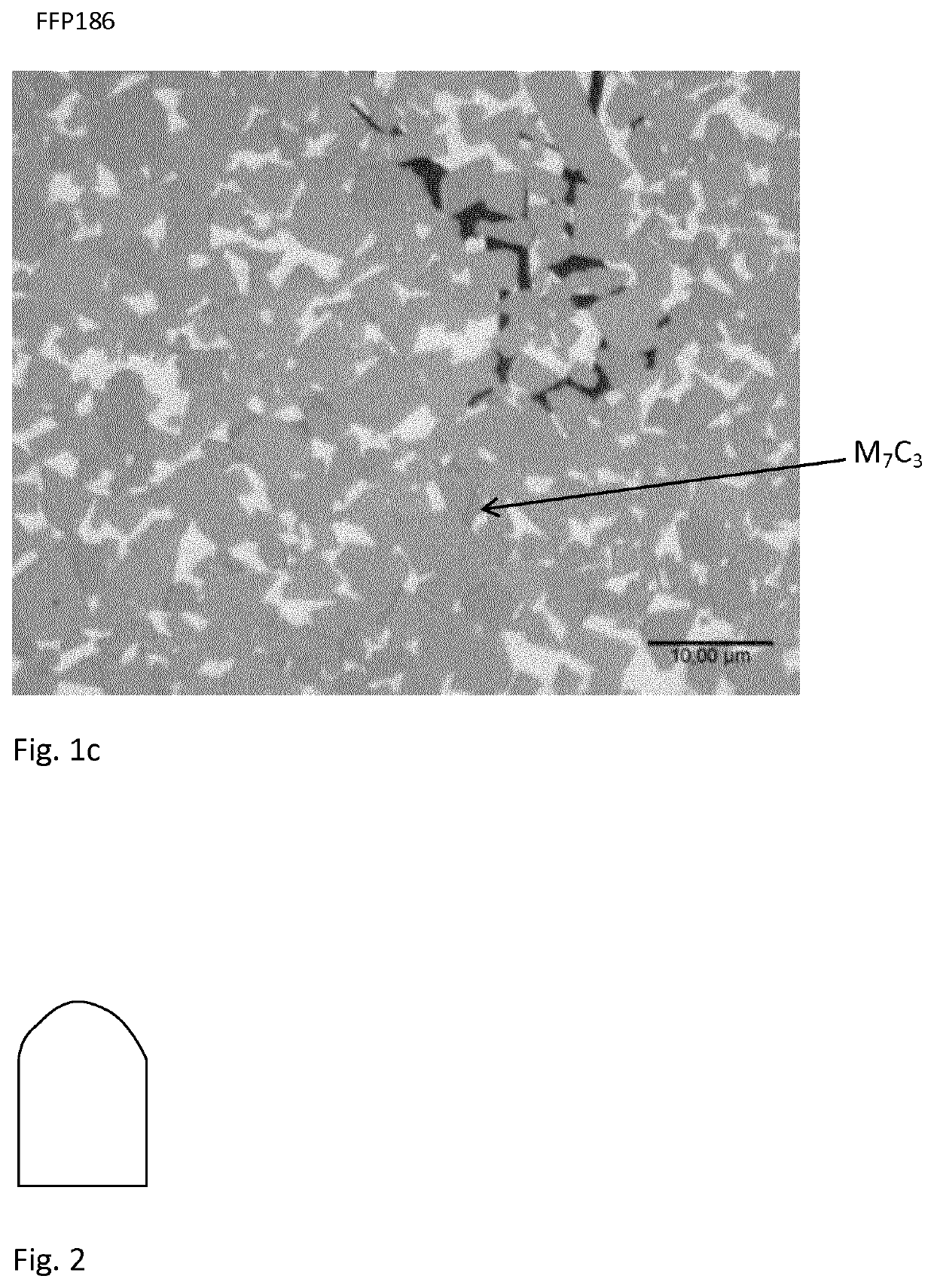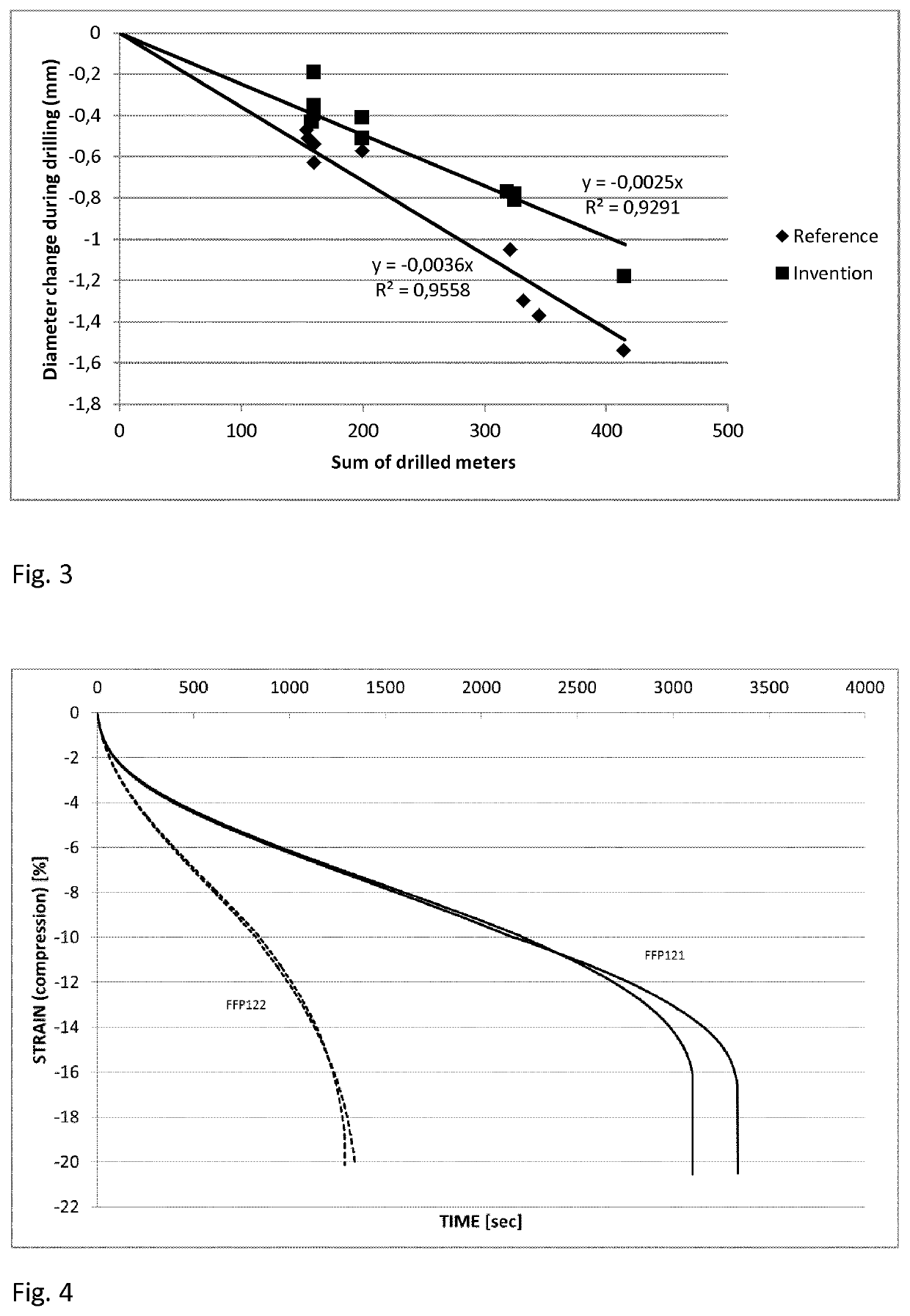Rock drill button
a drill bit and button technology, applied in drill bits, earth-moving drilling, drilling accessories, etc., can solve the problems of reduced binder phase, material becomes difficult to sinter, and cemented carbide becomes too brittle, so as to improve corrosion resistance, reduce wear, and improve hardness and ductility.
- Summary
- Abstract
- Description
- Claims
- Application Information
AI Technical Summary
Benefits of technology
Problems solved by technology
Method used
Image
Examples
example 1
Reference
[0025]A material with 6.0 wt % Co and balance WC was made according to established cemented carbide processes. Powders of 26.1 kg WC, 1.72 kg Co and 208 g W were milled in a ball mill for in total 11.5 hours. During milling, 16.8 g C was added to reach the desired carbon content. The milling was carried out in wet conditions, using ethanol, with an addition of 2 wt % polyethylene glycol (PEG 80) as organic binder and 120 kg WC-Co cylpebs in a 30 litre mill. After milling, the slurry was spray-dried in N2-atmosphere. Green bodies were produced by uniaxial pressing and sintered by using Sinter-HIP in 55 bar Argon-pressure at 1410° C. for 1 hour.
[0026]Details on the sintered material are shown in table 1.
[0027]The WC grain size measured as FSSS was before milling 5.6 μm.
example 2
Invention
[0028]A material with 6.0 wt % Co, 0.6 wt % Cr and balance WC was made according to established cemented carbide processes. Powders of 25.7 kg WC, 1.72 kg Co 195 g Cr3C2 and 380 g W were milled in a ball mill for in total 13.5 hours. During milling, 28.0 g C was added to reach the desired carbon content. The milling was carried out in wet conditions, using ethanol, with an addition of 2 wt % polyethylene glycol (PEG 80) as organic binder and 120 kg WC-Co cylpebs in a 30 litre mill. After milling, the slurry was spray-dried in N2-atmosphere. Green bodies were produced by uniaxial pressing and sintered by using Sinter-HIP in 55 bar Ar-pressure at 1410° C. for 1 hour.
[0029]The composition after sintering is given in Table 1, denoted FFP121, and sintered structure is shown in FIG. 1a. The material is essentially free from chromium carbide precipitations.
[0030]The WC grain size measured as FSSS was before milling 6.25 μm.
[0031]
TABLE 1Details on materials produced according to ex...
example 3
Invention
[0032]A material with 11.0 wt % Co, 1.1 wt % Cr and balance WC was made according to established cemented carbide processes. Powders of 37.7 kg WC, 3.15 kg Co, 358 g Cr3C2 and 863 g W were milled in a ball mill for in total 9 hours. During milling, 19.6 g C was added to reach the desired carbon content. The milling was carried out in wet conditions, using ethanol, with an addition of 2 wt % polyethylene glycol (PEG 40) as organic binder and 120 kg WC-Co cylpebs in a 30 litre mill. After milling, the slurry was spray-dried in N2-atmosphere. Green bodies were produced by uniaxial pressing and sintered by using Sinter-HIP in 55 bar Ar-pressure at 1410° C. for 1 hour.
[0033]Details on the sintered material are given in table 1 and the structure is shown in FIG. 1b, denoted FFP256. The material is essentially free from chromium carbide precipitations.
[0034]The WC grain size measured as FSSS was before milling 15.0 μm.
WC Grain Sizes of Sintered Samples of Examples 1-3
[0035]The WC ...
PUM
| Property | Measurement | Unit |
|---|---|---|
| grain size | aaaaa | aaaaa |
| grain size | aaaaa | aaaaa |
| grain size | aaaaa | aaaaa |
Abstract
Description
Claims
Application Information
 Login to View More
Login to View More - R&D
- Intellectual Property
- Life Sciences
- Materials
- Tech Scout
- Unparalleled Data Quality
- Higher Quality Content
- 60% Fewer Hallucinations
Browse by: Latest US Patents, China's latest patents, Technical Efficacy Thesaurus, Application Domain, Technology Topic, Popular Technical Reports.
© 2025 PatSnap. All rights reserved.Legal|Privacy policy|Modern Slavery Act Transparency Statement|Sitemap|About US| Contact US: help@patsnap.com



